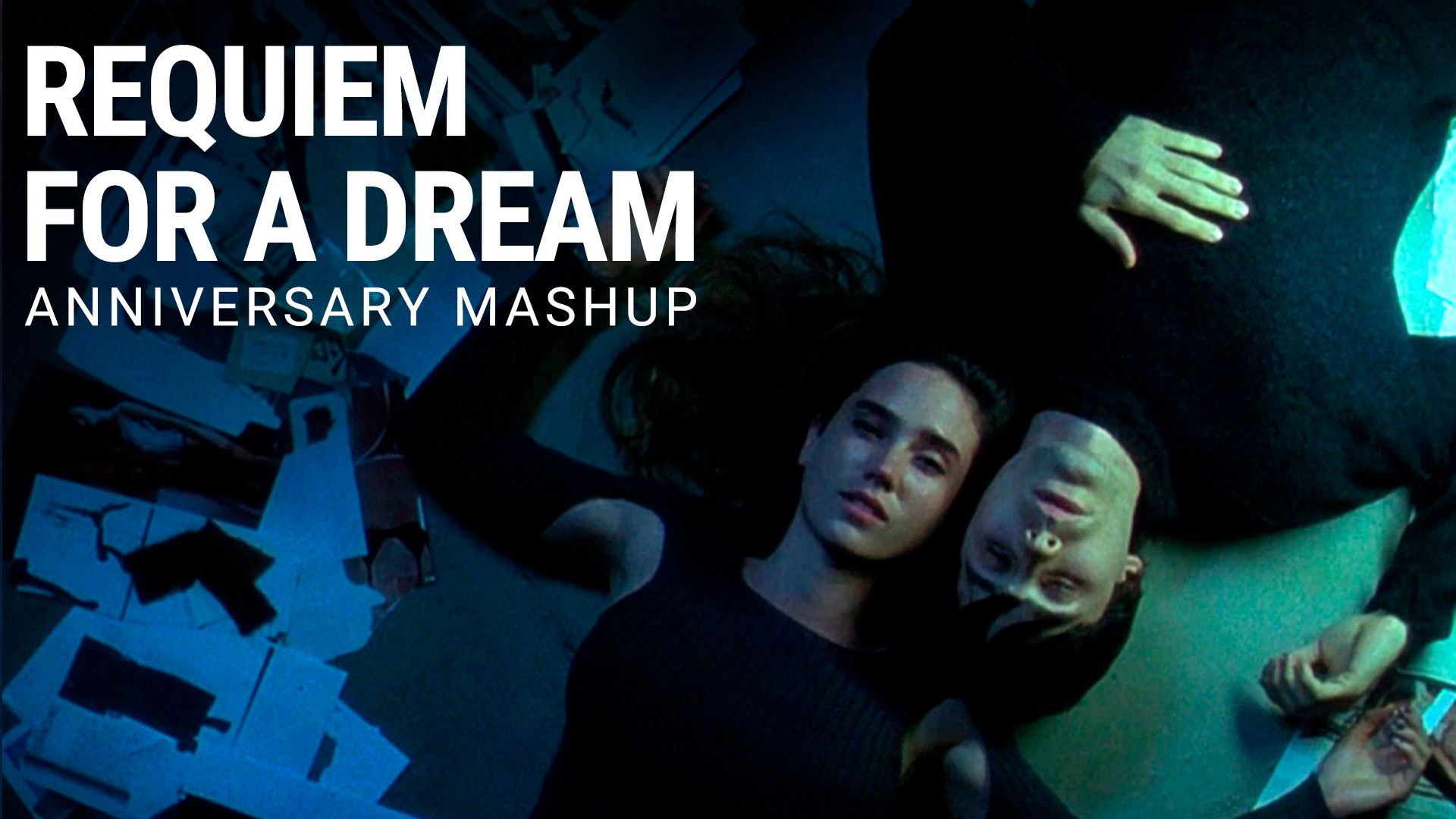Requiem for a Dream (2000)

Requiem for a Dream is a 2000 psychological drama directed by Darren Aronofsky, based on the novel of the same name by Hubert Selby Jr. The film features an exceptional cast, including Ellen Burstyn, Jared Leto, Jennifer Connelly, and Marlon Wayans. Known for its brutal portrayal of addiction and its devastating consequences, Requiem for a Dream has gained a reputation as one of the most intense and harrowing films of its time. The screenplay, written by Aronofsky in collaboration with Selby, explores themes of hope, desperation, and the destructive power of addiction.
The film follows the lives of four individuals, each struggling with their own addictions and dreams of a better future. Sara Goldfarb (Ellen Burstyn) is an elderly woman who dreams of appearing on a TV show, while her son Harry (Jared Leto) and his girlfriend Marion (Jennifer Connelly) seek to escape their lives through heroin use. Harry’s best friend Tyrone (Marlon Wayans) joins them in their drug-induced journey, all of them harboring hopes of a better life. However, as the story unfolds, their dreams spiral into nightmarish realities, and their dependencies take a devastating toll on their lives.
At the heart of Requiem for a Dream is the exploration of addiction and its capacity to strip away the humanity of its victims. The film does not shy away from showing the physical, emotional, and psychological damage caused by drugs. It presents addiction as an all-consuming force that destroys the characters’ relationships, dreams, and futures. The film contrasts their initial hopes for a better life with the brutal, soul-crushing realities of their addiction. Through vivid imagery and harrowing scenes, Aronofsky forces the audience to confront the devastating consequences of drug dependency.
The performances in Requiem for a Dream are nothing short of extraordinary. Ellen Burstyn’s portrayal of Sara Goldfarb earned her an Academy Award nomination for Best Actress, as she transforms from a hopeful woman longing for television fame to a desperate addict spiraling into madness. Jared Leto, Jennifer Connelly, and Marlon Wayans also give powerful performances as they embody their characters’ descent into addiction. The emotional depth and vulnerability of the actors make the characters’ journeys all the more tragic and compelling. The film’s raw performances create an emotional impact that stays with the audience long after the credits roll.

Darren Aronofsky’s direction in Requiem for a Dream is bold, inventive, and intensely immersive. He uses a variety of cinematic techniques to depict the characters’ inner turmoil and the overwhelming grip of addiction. The film is known for its rapid editing, split screens, and extreme close-ups, which create a sense of urgency and disorientation. Aronofsky also employs a haunting and memorable score by Clint Mansell, which further amplifies the film’s sense of dread. The visual style is as unsettling as the story itself, contributing to the film’s nightmarish quality and its exploration of mental and physical collapse.

Requiem for a Dream had a significant impact on both critics and audiences upon its release. It received widespread critical acclaim for its performances, direction, and its unflinching portrayal of addiction. However, the film’s intense content, graphic imagery, and unrelenting atmosphere also made it polarizing. Some viewers found the film’s depiction of addiction to be too disturbing, while others praised its realism and emotional depth. Despite its controversial nature, Requiem for a Dream has earned a lasting place in cinematic history and is often cited as one of the most powerful films ever made about addiction.

In conclusion, Requiem for a Dream is a haunting, unflinching exploration of addiction and its destructive consequences. Through stellar performances, intense direction, and a harrowing narrative, the film delves deep into the human psyche, showing how dreams can quickly turn into nightmares under the weight of addiction. Darren Aronofsky’s film serves as a stark reminder of the dangers of dependency, offering a brutal but poignant commentary on the lengths people will go to in pursuit of their desires. It is a film that forces audiences to confront uncomfortable truths, leaving a lasting emotional impact long after the credits have finished.











